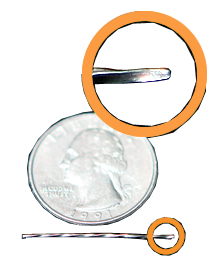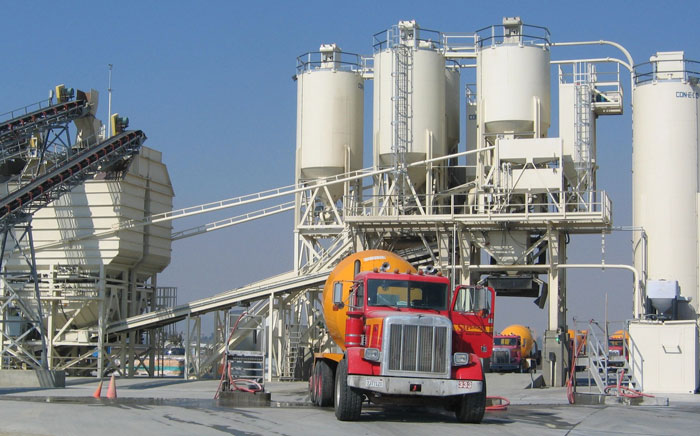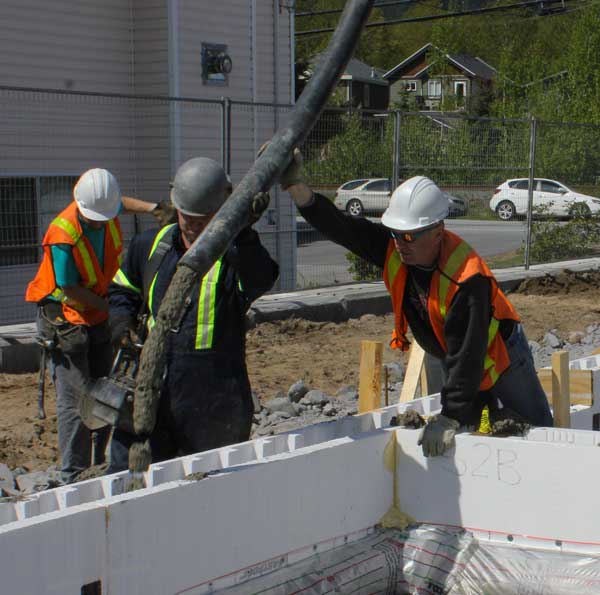
Dispersing Helix® in Concrete
Helix® has a natural tendency to clump or lock together during storage due to its twisted and square cross section. If clumps of fibers are added to concrete they will get coated with concrete and remain as clumps indefinitely. Even rapid and continuous mixing in the ready mix truck will not disperse the clumps.
Clumps of Helix® in the concrete can result in two problems:
- The concrete pump may get blocked;
- The dosage specified by the Engineer may not be achieved.
To prevent clumping and to ensure accurate dosage, Helix® must always be added at the ready mix plant according to the following method (works with both wet and dry batch plants).
Verification of the Helix dosage can be determined using the methods shown below.

Mixing Procedure for Ready Mix Plants (wet or dry)
Helix clumping will NEVER occur if the following procedure is rigorously followed:
- Add a minimum of 6% of the mix water (more water is better) into the drum, with the drum turning at charging speed;
- Dump all of the Helix® into the drum in one go, no need to slowly shake;
- Rotate the drum at charging speed for six minutes (as the clumps fall over the mixing fins they are broken up into 2D layers, with the water acting as a lubricant).
- Add the sand, aggregate and cement in the normal manner;
- Mix an additional 6 minutes in the truck drum to ensure the Helix is completely disbursed.

Pumping Helix®
Helix® fibers are 1" long and present minimal pumping resistance as long as the fibers are completely dispersed throughout the concrete without clumps.
A minimum 3" line should be used to pump Helix® reinforced concrete. A 2 1/2" diameter line end is not recommended.
Verification of Helix® Dosage
As Helix® is a structural fiber, the project engineer may require verification that the specified Helix® dosage has been achieved and that the fibers are dispersed throughout the concrete. For residential projects, this verification is not usually required because of the testing agency expense.
There is a safety factor of approximately 10% in each Helix design. Appendix A, page 21 of the UES Evaluation Report provides information on this safety factor.
Verification tests can be carried out on fluid or cured concrete:
Fluid Concrete
There are two test methods used with fluid concrete. The Washout Test is approximately twice the cost of the Poured Column Test as the Testing Agency must attend to remove the cement fines from the concrete. Whereas the Poured Column Test samples can be taken by the contractor and sent to the Testing Agency.
1. Poured Column Test
Fill 6" diameter cardboard tubes 8" in length on the jobsite at 25%, 50% and 75% of the concrete batch discharge (in accordance with CSA A23.2-1C "Sampling Plastic Concrete"). Each filled tube is externally vibrated to promote densification. Once the columns have cured, they are sent to the Testing Agency.
The Testing Agency will cut each cylinder in half with a diamond saw, retaining one side. The number of Helix fibers exposed on the cut surface is counted and the number of fibers/m2 recorded for each sample.
Using the UES Evaluation Report, Table 2, page 13, the line corresponding to the Helix count/m2 with the appropriate concrete compressive strength to determine the dosage equivalent to the count. (For example with 8,000 fibers/m2, 30 MPa concrete, Class B structure, the dosage would be 16.8 kg/m3.) This dosage is then compared to that required by the project's rebar schedule.
The safety factor (Appendix A, page 21) can be invoked if required. For example, using the count of 8,000 fibers/m2 and extrapolating to 16.8 kg/m3, a dosage of 16.8 x 15.9 /17.5 = 15.3 kg/m3 would provide equivalent structural performance to the original rebar design.
2. Washout Test
In Canada the relevant test is CSA A23.2-16C "Standard test method for determination of steel fiber content in plastic concrete".
Three samples are taken from the concrete discharge at 25%, 50% and 75%. Each sample is of a specific volume (from 7 to 15 liters). The Testing Agency washes the cement fines from each sample and uses a magnet to separate the Helix® from the remaining aggregate. The fibers are dried and weighed, enabling the dosage to be calculated.
Cured Concrete
Drill 4" core samples from the concrete slab or wall. The number of samples is determined by the confidence level required by the Engineer of Record. The Testing Agency will then follow the same procedures as in the Poured Column Test.